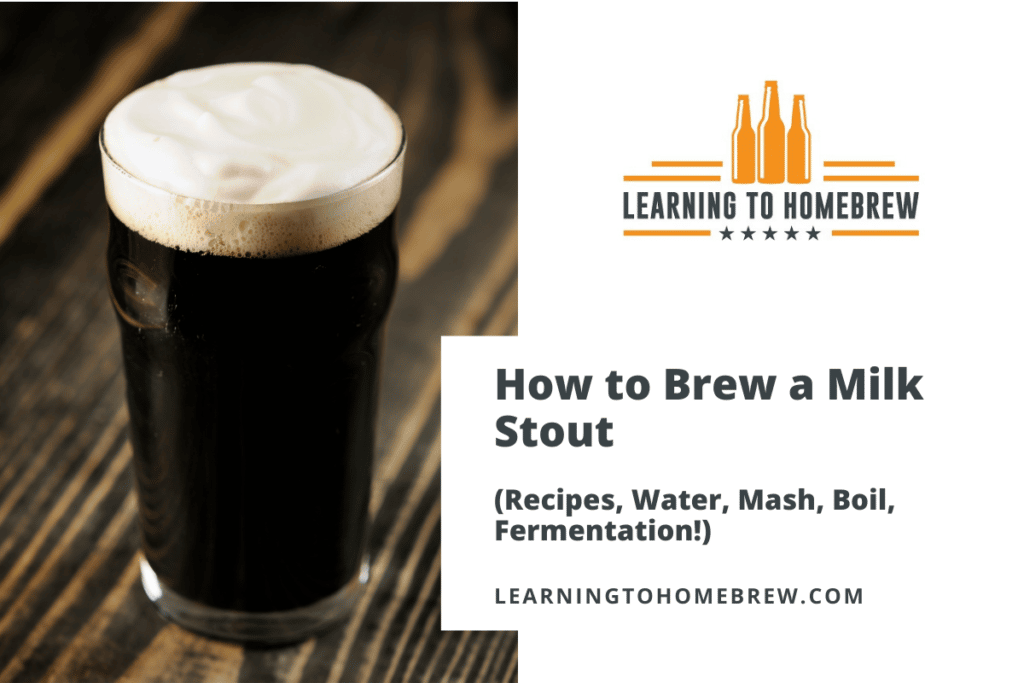Stouts and porters are well known for their characteristic dark coloration. It makes you wonder if the beer is dark because it is a stout or some other reason.
Stouts and porters are dark because of the roasted grained included in the recipe, such as roasted barley, black patent malt, chocolate malt, carafa special, midnight wheat, and caramel malts. Roasted grains are darkened by the roasting process, which produces varying levels of color, bitterness, and other flavors.
The process behind the color of a beer is fascinating. It involves the type of ingredients, ratio thereof, and other aspects.
Topics We Cover
Why are stouts and porters dark in color?
While beers come in various flavors and styles, the colors range from light straw to pitch black. More than that, styles such as stouts and porters are almost always very dark in color. What is it about these styles that make them so dark?
Stouts and porters are usually dark in color because of the grains used in the brewing process. The darker the beer becomes in the end, the more dark malted grains are used. Less dark malts or lighter malts will result in a lighter beer.
Most malted grains used to make the mash (a liquid that is fermented to make beer) are light because they have not been roasted for as long. The longer malted grains, such as barley, are roasted, the darker they become. The temperature they are roasted at also plays a role.
The measure of how dark a roasted grain is called Lovibond. The higher degree of Lovibond, the darker its color contribution will be.
The typical recipe for a stout or a porter calls for a small amount of these dark roasted malts. They are important to the bold character of these beers. However, the recipe will still call for a decent amount of light malts. A little goes a long way when it comes to roasted malts.
Does the dark color change the flavor of stouts and porters?
To say that the color of the beer affects the flavor would be like saying the color of icing affects the taste. It’s almost the reason, but not quite. The food dye changes the color and can affect the taste.
Both the color and flavor of stouts and porters are because of the grain bill in the brewing recipe. Dark grains will darken the beer and provide iconic flavors.
As malted grains are roasted to provide color, they change what flavor they provide. This roasting takes advantage of the Malliard reaction to create colors and flavors. The roasting process can result in malty flavors such as:
- Coffee
- Chocolate
- Toasted bread
- Espresso
- Caramel
So it isn’t that the flavor of a stout or porter comes from its color. It is entirely dependent on the ingredients.
Are stouts and porters always dark?
This implies that you could have a light-colored beer that tastes like a stout or porter. But aren’t all of the beers in this style dark?
Stouts and porters are almost always dark. However, there is such a thing as a white stout. All of the flavors of the stout with a light appearance. These beers are not very common. Most stouts and porters are dark.
The flavors in a stout are primarily from dark malts. However, crafty brewers can add ingredients that add those flavors without darkening the beer.
It is typically simplest to make a stout or porter with regular ingredients. That does lack the excitement of experimentation that comes with white stouts of course.
Why are some stouts are black and others brown?
In the spirit of experimentation, brewers have pushed the boundaries of what makes a beer part of a certain style. This can manifest in the color of the beer. Stouts that are typically jet black might be closer to brown.
Stouts can be brown to black depending on the ratio of dark to light malts in the recipe. The less dark malt there is the lighter the beer will be overall. Additionally, the recipe may have brown malts instead of more roasted malts.
The majority of the malts in many beer recipes are light malts that don’t provide much color. If the ratio is skewed towards these light malts the beer won’t be as dark as you’d expect. This can result in stouts that look more brown than black.
7 common Ingredients that make stouts and porters dark
When it comes to which ingredients make beers dark the simplest answer is the grains. That said, there are a lot of ingredients that affect the color of a beer. Each ingredient will affect the color by different degrees..
roasted barley, black patent malt, chocolate malt, carafa special, midnight wheat, and caramel malts
- Roasted Barley
- Black Patent Malt
- Chocolate Malts
- Carafa Special
- Midnight Wheat
- Caramel Malt
- Longer boil
Roasted Barley
A common ingredient in stouts, roasted barley is created by roasting unmalted grain at a specific temperature and for a specific amount of time. Roasted barley adds a heavy roasted flavor that many people compare to coffee.
Black Patent Malt
Even darker than roasted barley, black patent malt is unmalted barley that has been roasted almost to a crispy. When added sparingly to a beer, it lends strong roasty flavors but beer can take on a burnt taste if too much is used.
Chocolate Malts
These malts are a style of roasted malts. They are typically roasted for less time than other malts. It is important to note that even within chocolate malts, darker and lighter variations exist.
These malts add darkness to the beer directly in addition to chocolate flavors.
Carafa Special
A special type of dehusked dark-roast malt from Weyermann, Carafa Special comes in a few different varieties and can be thought of as a ‘light roast’ in terms of flavor and aroma.
Midnight Wheat
Midnight wheat is an interesting grain because it was specifically created to add color to beer without adding bitterness, astringency, or aftertaste. Basically, this is the color of roasted barley without the flavor!
Caramel Malts
These malts go through a different chemical reaction from roasted malts. By getting the grains wet and then taking them through a few different stages of temperature, the grains change color and develop sweeter flavors.
These malts will darken the beer but not as much as roasted grains.
Longer boil
While this isn’t an ingredient per se, it can darken a beer. During brewing, there is a stage when the mash is boiled. If the boil period is extended, it can darken the beer via caramelization. This will also change the flavor.




